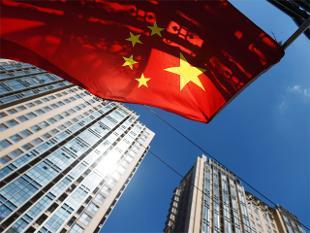
BEIJING, April 26 (Xinhua) -- A high-level meeting has sent fresh signals for more structural reforms in China despite better-than-expected improvement in the world's second-largest economy.
Authorities must base their judgement of the economic situation on "the logic of the new normal" and unswervingly press ahead with strategic restructuring, according to a meeting of the Political Bureau of the Communist Party China (CPC) Central Committee on Tuesday.
There were "cyclical factors" behind the economic upturn, and China still has a long way to go and faces many challenges in restructuring its economy, according to the meeting.
Efforts must be made to "ensure that supply-side structural reforms are deepened," it said.
These calls, against the backdrop of a robust first-quarter performance for the Chinese economy, showed that policy makers are sober-minded and will persevere with the much-needed structural reforms, economists said.
The meeting was a reminder that authorities should not be complacent about the good economic data and become slack in reforms, according to Xu Hongcai, an economist with the China Center for International Economic Exchanges.
It remains to be seen whether the economic pickup will sustain, he cautioned, noting that the first-quarter improvement was related to the start of a recovery cycle for the global economy and relied heavily on infrastructure and property investment growth.
China's GDP expanded 6.9 percent year on year in the first quarter of 2017, up from the 6.8-percent growth in the previous quarter and 6.7 percent for 2016.
It also beat previous market expectations of 6.8 percent and came well above the annual growth target of around 6.5 percent.
While the achievement can be credited to previous reforms to reduce industrial overcapacity and boost consumption and innovation, a better external environment also played a supportive role.
The International Monetary Fund last week upgraded its forecast for the 2017 global economic growth to 3.5 percent from 3.4 percent in its January forecast. Both the euro-zone and Japan were given higher growth forecasts.
In March, China's exports in dollar-denominated terms rose 16.4 percent year on year, compared with a 1.3-percent decline in February and a 7.9-percent increase in January.
However, the external environment is far from stable. Further interest rate hikes in the United States will affect global capital flows, while rising protectionism could threaten trade growth, said Ning Jizhe, head of the National Bureau of Statistics.
Domestically, though factory activity, company profit and employment data were stronger, some indicators pointed to persisting downside risks.
Industrial investment growth accelerated to 4.9 percent in the first quarter, but it was still well below the 9.2-percent growth rate for overall fixed-asset investment, official data showed.
During the same period, consumption contributed 77.2 percent of the GDP increase, but retail sales growth slowed to 10 percent from 10.4 percent last year.
"The momentum of recovery is still relatively weak, and much is to be done to maintain the positive trend," Ning said.
To support sustainable growth, deepened reforms are needed to accelerate the shift of China's economy from old growth engines to new ones, said Zhang Liqun, a researcher with the Development Research Center of the State Council.
He urged stronger measures to deleverage the economy, shed industrial overcapacity and property inventories, and reduce corporate costs.
The good start for the economy in the first quarter demonstrated the effect of supply-side structural reforms and, at the same time, created favorable conditions for advancing those reforms, according to Zhang.
Tuesday's CPC meeting called for more efforts to build a sound business environment, open up more sectors to investors, and improve market expectations.
Industrial restructuring will be firmly pushed forward to upgrade traditional sectors and foster new growth momentum to rejuvenate the real economy and facilitate economic transformation, according to the meeting.




 A single purchase
A single purchase








